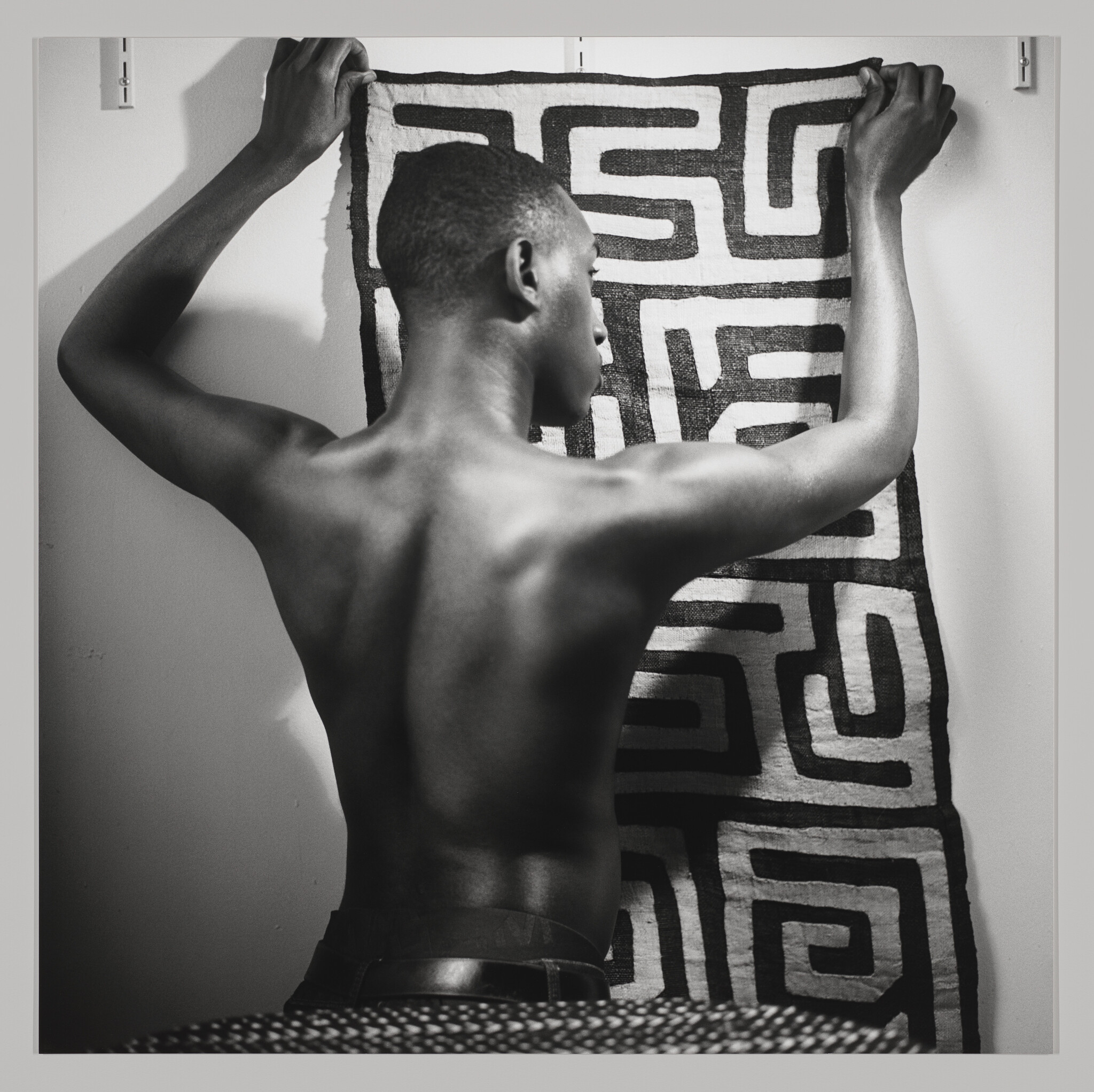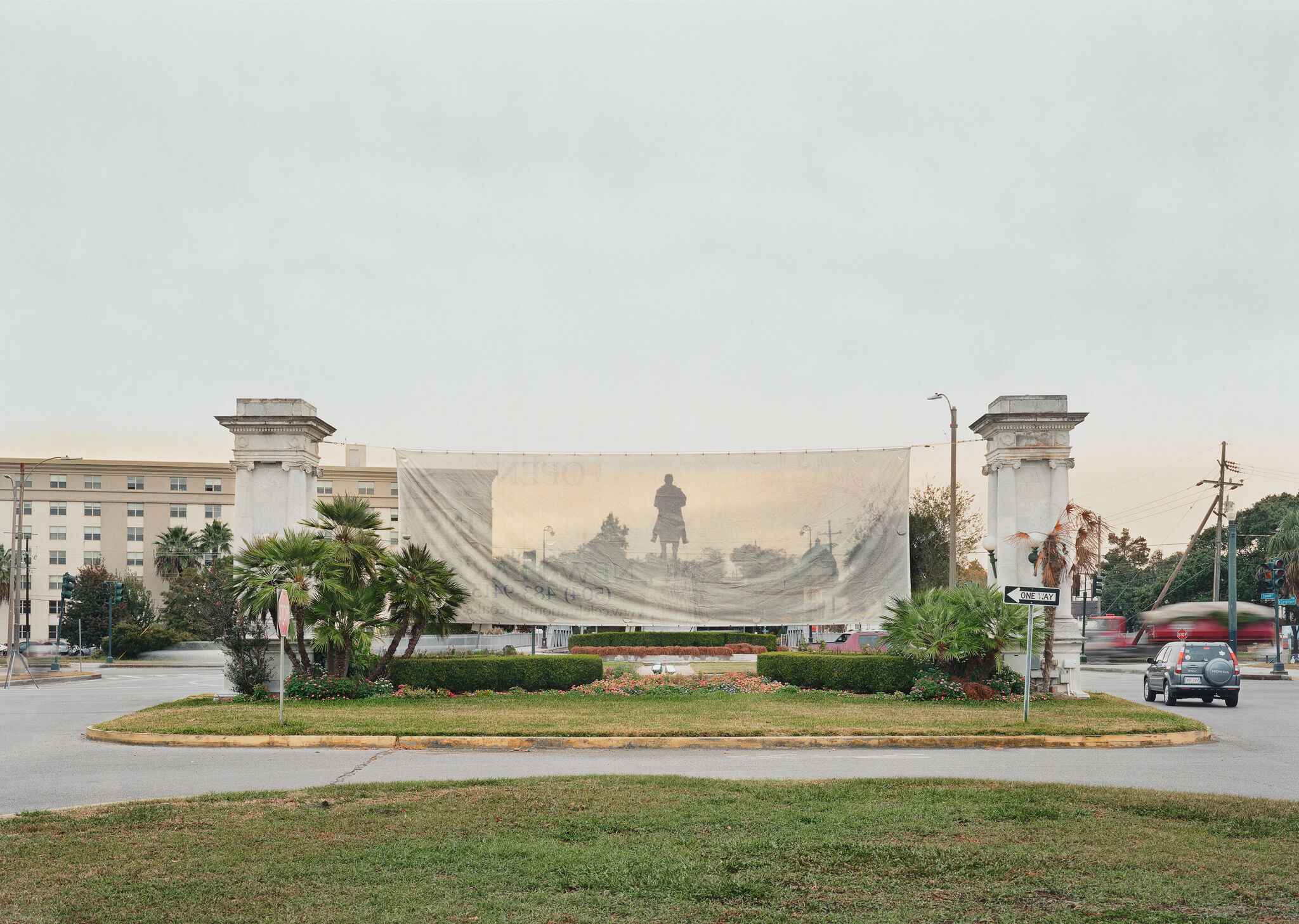Verbal Description: John Edmonds, Tête d'Homme, 2018
June 8, 2023
0:00
Verbal Description: John Edmonds, Tête d'Homme, 2018
0:00
Narrator: Tête d'Homme, 2018, is an inkjet printed photograph measuring about 23 x 29 inches. A brown-skinned Black man rests his cheek atop a grooved brown-clothed platform. The man has a cropped and rounded haircut, a mustache, a cropped beard, and wears a gold septum piercing. Most notable is the man’s gaze, which is piercing, powerful, and undeviating. The gaze is arresting and deep, inviting the viewer to consider who is really doing the looking. To his left, the man holds an African mask that was either purchased from a street vendor or was a decoration in someone’s home—its “authenticity” comes not from its origins, but from having been loved by Black New Yorkers. The mask is oblong, covered in tan and brown etchings, and has beads, in sets of three, lining the perimeter. Toward the bottom of the mask is the suggestion of a face—eyes etched into triangular forms above what appears to be an open mouth. The mask, too, appears to be staring directly at the viewer, once again drawing into question who and where the power of gazing lies.
The work is a direct quotation of Man Ray’s Noire et Blanche (1926), a black-and-white photograph that paired French model Kiki de Montparnasse with an African mask. While Man Ray’s image highlighted the visual contrast between her white skin and the black mask and the cultural distance between model and mask, Edmonds explains that he is responding to “how modernism has framed the Black body.” Further, Edmonds is working against fetishistic approaches used by many Surrealists, Cubists, and early Modernists, instead giving priority to individuality, intimacy, love, and familiarity.
In Inheritance.


